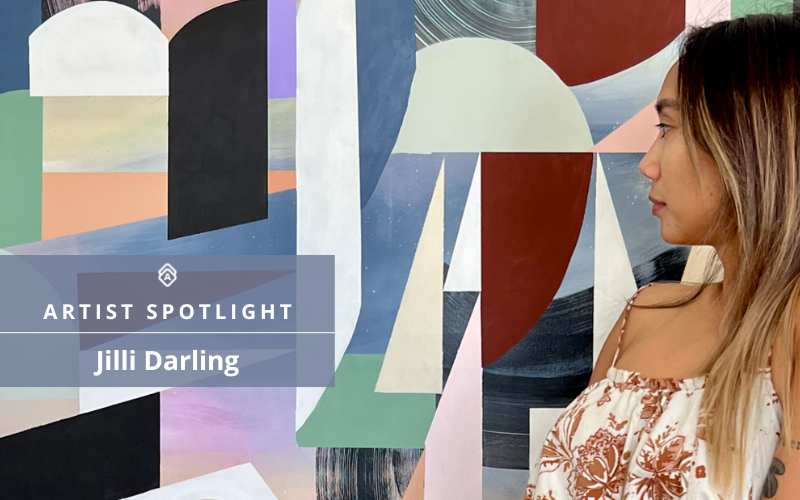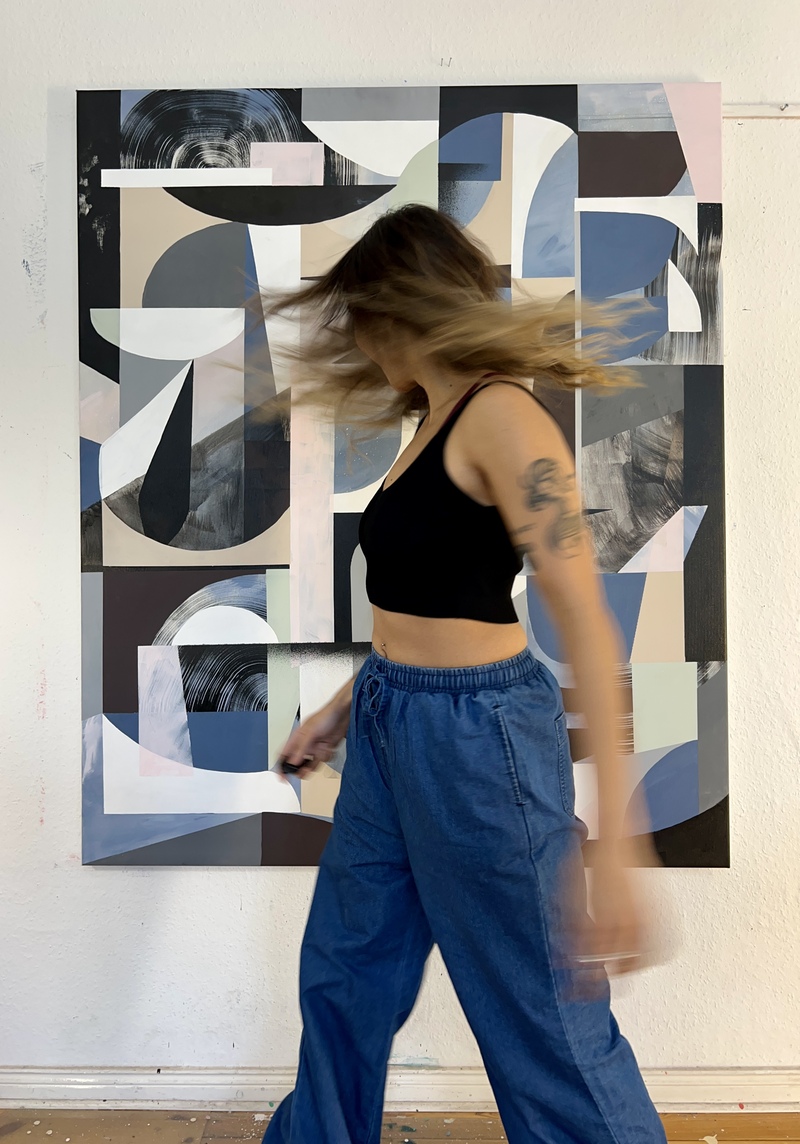"My markings are meditations of thought, of memory, of daydreaming."
Born in Quezon City, Philippines, and now based in Berlin, Featured Artist Jilli Darling's art reflects a life spent moving between places, identities, and ideas.
Jilli describes her work as a journey within the Self—a way of externalizing the internal. Her pieces are visual abstractions of the push and pull within, where bold, vibrant gestures meet quiet, meditative marks. Through shifts in perspective, colors are pitted against one another, seeking harmony. Her markings are meditations on thought, memory, and daydreaming, expressed with a playful energy that spills into large formats.
Working with acrylics and oils and experimenting with inks and charcoal, Jilli’s art is constantly evolving—balancing curiosity with reflection, dynamic boldness with calm, quiet dispositions.
Artwork Archive had the chance to chat with Jilli Darling about her creative process, her exploration of identity, and how Artwork Archive helps her manage her art career.
You can see more of her work on Discovery and learn more about her art practice below:
Jilli Darling in her studio. Photo courtesy of the artist
Can you walk us through your creative process?
I like the whole “start anywhere" approach to a project, where I just need to put something—anything on the canvas.
Recently, I’ve been painting a version of the sky in the background first—some kind of sunset, dusk, or darkening scene. I’ve always loved the colors sunsets create, so I’ve started my paintings with these colors that make me happy.
As for knowing when it’s done, it’s something you just feel as a creator. It's an innate, internal signal that tells you—and only you—that you’ve completed the full process.
You describe your art as a journey within the Self. What emotions or thoughts often arise during your creative process?
Yes, I say it’s a journey because it’s winding—an eternal dialogue weaving in and out of fictional situations in my head, trying to piece together who I am and the life I am striving to live.
Fair to say it’s a mix of emotions, oscillating between a feeling of greatness and doubt. Many artists could probably commiserate—haha.
How do you experiment with shifts in color to achieve harmony in your work? Are these decisions more intuitive or carefully planned?
I studied graphic design, so I think I’m always trying to find a visual balance in my compositions.
I like the surprise that comes from pairing certain colors together, like earth tones with a bit of neon, and then finding all the colors in between where they can coexist on the canvas—without fighting each other and with each one shining in its own right.
To me, every color is great.
Achieving harmony with my colors is a mix of both intuition and planning. When I’m impatient, I like to use my iPad to experiment with colors—it's a great way to try things out quickly without the mess or paint waste.
I don’t like carefully planning my work because its development in the moment is so much fun, and I love the surprise of what the canvas reveals as I puzzle-piece the colors and shapes.
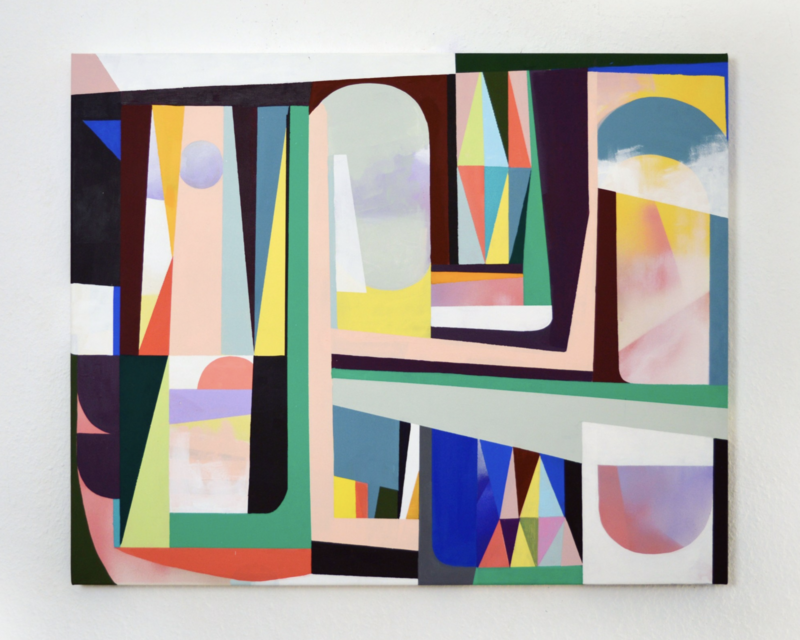
Jilli Darling, Patchwork Series: Untitled 3, 80 x 100 x 4 cm
In hindsight, what’s something you wish you knew before becoming a professional artist?
I wish I knew not to underestimate the amount of work and self-discipline it takes to manage yourself.
It requires a significant length of time and hours upon hours of effort to create good work.
Art becomes an industry when you need to make money and aren't independently wealthy. I wish I had understood that being an artist means you are truly always working at it.
What do you think is the most misunderstood aspect of being a professional artist?
One of the most misunderstood aspects of being a professional artist is the idea that creating art is purely fun.
While I do find joy in the process, painting is labor—it’s a challenging process of creation that often brings both pain and fulfillment.
In a way, it’s like willingly embracing the discomfort of birthing something into the world. Maybe most artists are actually a bit sadistic if you think about it, seeking out and enduring that kind of intensity over and over again.
On a more practical level, there’s also the misconception that being a professional artist means you’re constantly exhibiting in galleries and have ‘made it’ in the art world. For many self-represented artists, it’s a constant fight to get your work seen and give it the exposure it deserves.
One silver lining is social media—it allows you to share your work and reach an audience beyond traditional avenues, even if it’s just one person at a time.
What made you decide you needed something like Artwork Archive to help manage your art career?
At the start of my career as a full-time artist, I quickly realized the importance of having a reliable system to inventory my work.
At the time, I was also juggling tasks like setting up my website, so staying organized was key. I first discovered Artwork Archive while trying to create my own inventory spreadsheet—I had been Googling templates and searching for better ways to manage my work.
Around the same time, an artist I follow on Instagram shared a collection of their work through Artwork Archive, and it caught my attention. After looking into the platform more deeply, I saw how much it could simplify inventory management and many other aspects of my art business.
Artwork Archive has been an integral part of my development as an artist, providing tools that make organization and bookkeeping simple and professional.
Simplify Your Art Business:
Artwork Archive is designed for artists at any stage of their career. You don’t need to wait until you’re more established to ditch the spreadsheets—organize your work, showcase your portfolio, and handle bookkeeping with tools that help your art business thrive and give you more time to create!
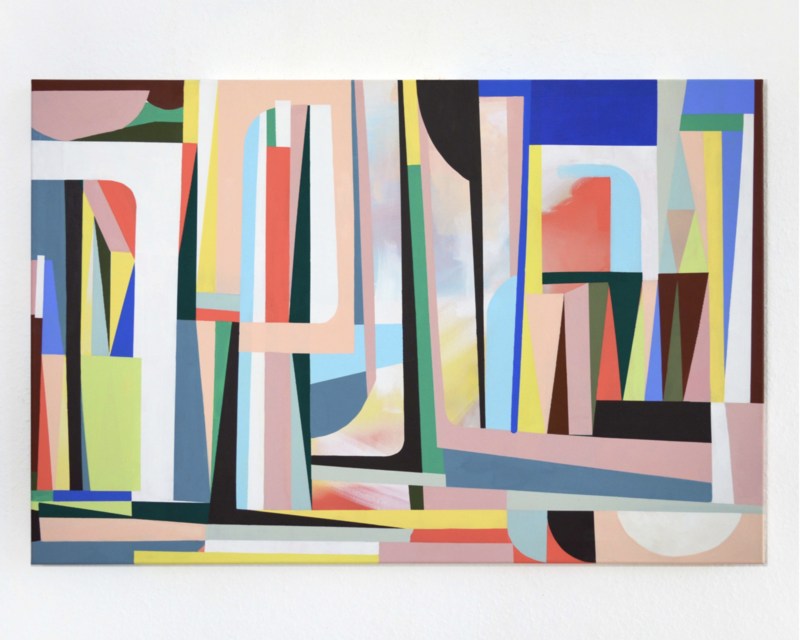
Jilli Darling, Thin, Lengthy Objects, 120 x 80 x 4 cm
What is your favorite Artwork Archive feature?
My favorite Artwork Archive feature is the Inventory Management tool, paired with the Public Profile option for showcasing my work online.
Having an organized inventory system is crucial for keeping track of all my pieces—from works sold, exhibited, gifted, or donated. Artwork Archive makes it easy to document details like images, dimensions, and pricing for each artwork, simplifying everything from planning exhibitions to communicating with collectors.
The Public Profile feature also has been invaluable, especially at the start of my career. It gives me a professional, easy-to-update online showcase of my portfolio that I can quickly share with galleries or clients.
This seamless combination of inventory and public presentation saves me time and also helps me connect with a wider audience while maintaining a polished, professional online presence.
Stay Organized and Showcase Your Work:
Use Artwork Archive’s Inventory Management to track your pieces and details, and let the Public Profile automatically update into a polished portfolio you can share with galleries and collectors!
What advice would you give an artist who’s just starting out in their professional career?
Be consistent and show up for yourself. Do the work—you’re the only one who can get it done.
But also remember that even when you’re not actively working, as an artist, you are.
You're developing mentally, emotionally, and creatively, even when you’re at rest. And rest—truly doing nothing—is integral to being an artist.
Know that being a professional artist is unlikely to make you rich unless you already are, or famous unless you’re already in that world. There is no glamour in art. For me, it’s a way to exist in this world and make it bearable—and in bouts, joyful.
One piece of advice I received from another artist when I was still contemplating the leap was this:
If you want to be an artist, you simply have to do it.
What I realized in doing it was that I will constantly—and forever—be doing it.
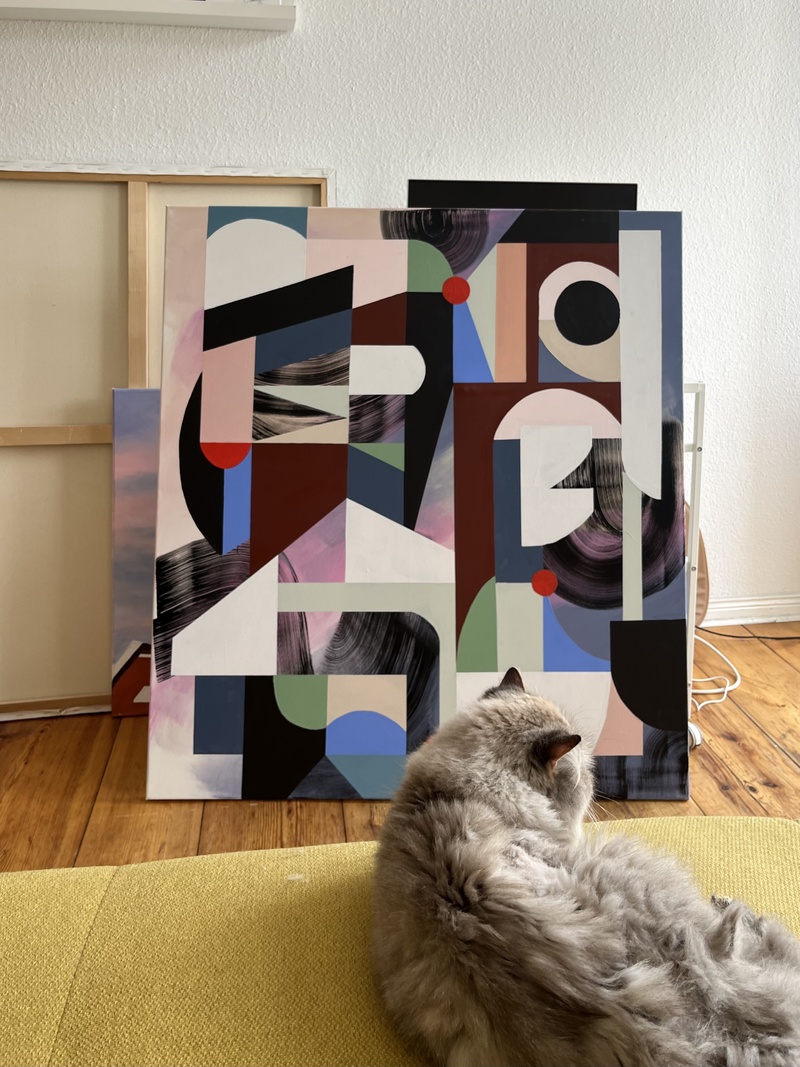
A view inside Jilli Darling's studio. Photo courtesy of the artist
Jilli Darling uses Artwork Archive to professionalize her practice, manage her inventory, showcase her work, and a lot more.
You can make an online portfolio, catalog your artwork, and generate reports like inventory reports, tear sheets, and invoices in seconds with Artwork Archive. Take a look at Artwork Archive's free trial and start growing your art business.
